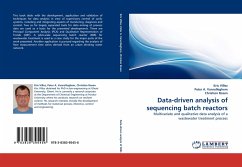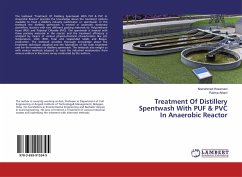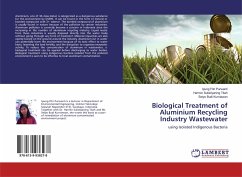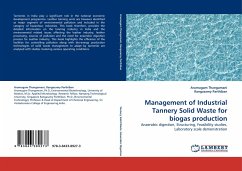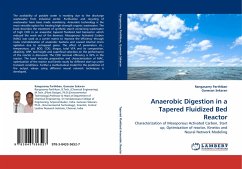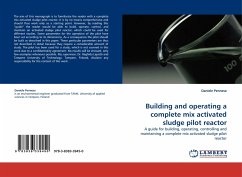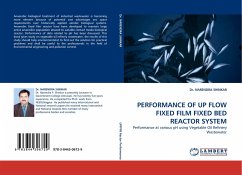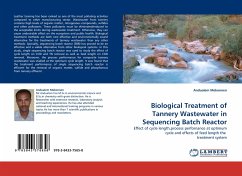
Biological Treatment of Tannery Wastewater in Sequencing Batch Reactor
Effect of cycle length,process perfornance at optimum cycle and effects of feed length the treatment system
Versandkostenfrei!
Versandfertig in 6-10 Tagen
32,99 €
inkl. MwSt.

PAYBACK Punkte
16 °P sammeln!
Leather tanning has been ranked as one of the most polluting activities compared to other manufacturing sector. Wastewater from tannery contains high levels of organic matter, nitrogenous compounds, sulfides and other pollutants. These pollutants must be eliminated/reduced to the acceptable limits during wastewater treatment. Otherwise, they can cause undesirable effect on the ecosystem and public health. Biological treatment methods are both cost effective and environmentally sound alternative for the treatments of tannery wastewater than any other methods. Specially, sequencing batch reactor...
Leather tanning has been ranked as one of the most polluting activities compared to other manufacturing sector. Wastewater from tannery contains high levels of organic matter, nitrogenous compounds, sulfides and other pollutants. These pollutants must be eliminated/reduced to the acceptable limits during wastewater treatment. Otherwise, they can cause undesirable effect on the ecosystem and public health. Biological treatment methods are both cost effective and environmentally sound alternative for the treatments of tannery wastewater than any other methods. Specially, sequencing batch reactor (SBR) has proved to be an effective and a viable alternative from other biological systems. In this study, single sequencing batch reactor was used to study the effect of cycle length on COD and TN removal as well as feed length on COD removal. Moreover, the process performance for composite tannery wastewater was studied at the optimum cycle length. It was found that the treatment performance of single sequencing batch reactor is efficient for the removal of organic matter, sulfide and phosphorous from tannery effluent.



